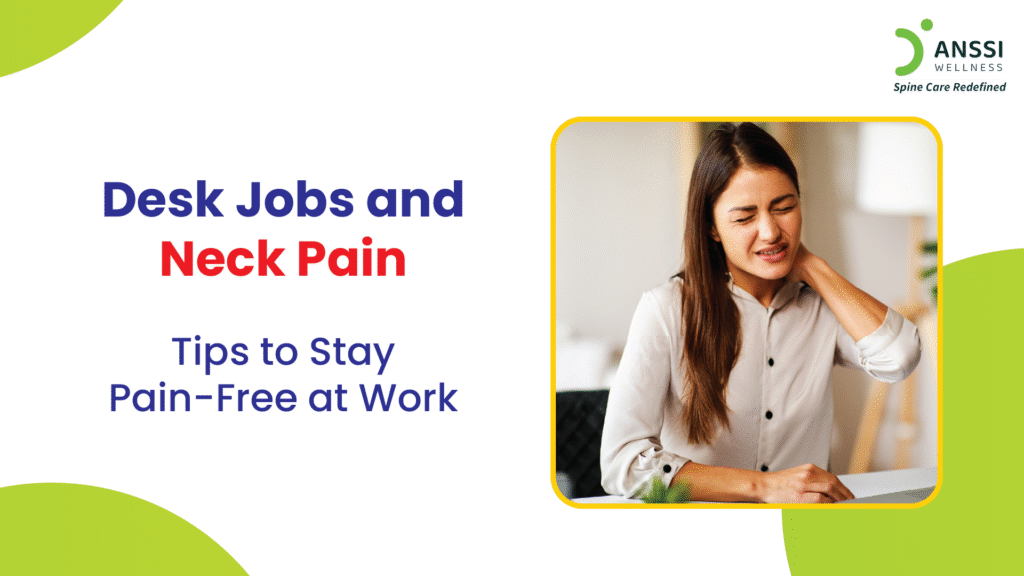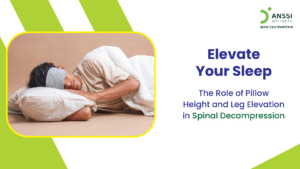In today’s digital world, most professionals spend long hours seated at their desks, glued to computer screens. While technology has improved efficiency, it has also created new health challenges; one of the most common being neck pain.
Prolonged sitting, poor ergonomics, and constant screen use strain the spine and muscles, leading to discomfort and, in some cases, chronic issues. The good news is that with the right habits and workplace adjustments, you can prevent neck pain and protect your spine for years to come.
Understanding the Problem
Desk jobs seem harmless, but they can place significant stress on your neck and shoulders.
Slouching forward, keeping your head tilted toward the screen, or working with an improperly adjusted desk setup leads to what’s known as “forward head posture.” Over time, this posture increases the pressure on cervical discs and muscles, causing stiffness, tension headaches, and even nerve compression.
Ignoring early warning signs such as mild neck stiffness, shoulder tightness, or fatigue often worsens the condition. Many professionals accept these aches as part of office life, but untreated neck pain can evolve into chronic spinal issues, affecting productivity and quality of life.
Ergonomic Desk Setup
The foundation of a pain-free workday begins with your workstation setup. A few small adjustments can significantly reduce strain on your neck and spine.
- Chair: Use a chair that supports the natural curve of your spine. Adjust the height so your feet rest flat on the floor, and your knees remain at a 90-degree angle.
- Monitor: Your computer screen should be at eye level and about an arm’s length away. Looking down or craning your neck forward puts unnecessary pressure on your cervical spine.
- Desk: Keep your desk at elbow height. Place the keyboard and mouse close enough so your arms stay relaxed and your shoulders don’t hunch forward.
- Accessories: Use a headset for calls instead of cradling the phone between your neck and shoulder. Consider ergonomic tools like a laptop stand or adjustable desk.
Posture Improvement
Even with the best setup, posture matters.
- Sitting upright with your shoulders relaxed and your back supported minimises neck strain.
- Keep both feet flat on the ground and avoid crossing your legs for long periods.
- Make it a habit to check your posture regularly throughout the day. Many people unconsciously lean forward or hunch as work progresses.
- Setting a reminder every hour to sit tall and realign your spine can make a huge difference.
- Be mindful of everyday habits that add strain, such as staring down at your phone for extended periods.
- Raising devices to eye level and limiting screen time during breaks helps reduce cumulative stress on the neck.
Movement and Exercises
Stillness is the enemy of spinal health. Even with perfect posture, sitting for hours can stiffen muscles and reduce blood flow. Incorporating short breaks for movement is essential.
Try these simple stretches at your desk:
- Neck Tilts: Slowly tilt your head to each side, holding for 10 seconds to release tension.
- Shoulder Rolls: Rotate your shoulders backward and forward to relax tight muscles.
- Chin Tucks: Gently tuck your chin toward your chest and hold for a few seconds to counteract forward head posture.
In addition to stretches, low-impact exercises such as walking, yoga, or swimming strengthen core muscles and improve spinal flexibility. Set an alarm to take micro-breaks every 30-60 minutes and stand, walk around, or stretch to reset your posture and keep your body active.
Non-Surgical Care Option
Sometimes, despite ergonomic improvements and healthy routines, neck pain persists. This is often due to prolonged disc compression or chronic misalignment. In such cases, a number of non-surgical solutions can provide effective relief.
- Physiotherapy is one of the most common approaches, involving targeted exercises, stretches, and manual therapy to strengthen neck and shoulder muscles.
- Ice and heat therapy are simple yet effective methods for managing pain and inflammation. Ice reduces inflammation and swelling, while heat improves blood circulation and relaxes tense muscles.
- For long-term relief, non-surgical spinal decompression treatment is highly effective. This advanced treatment gently stretches the spine, relieving pressure on cervical discs and nerves, while promoting rehydration and healing. It is a safe, drug-free, and needle-free alternative to surgery.
When combined with lifestyle improvements such as posture correction, regular movement, and hydration, these therapies can significantly reduce chronic neck pain and prevent recurrence, allowing individuals to regain comfort and productivity in daily life.
About ANSSI:
ANSSI Wellness focuses on improving the quality of life for patients suffering from spinal issues, aiming to provide relief where other conventional treatments have failed. Through advanced Non-Surgical Spinal Decompression Treatment, ANSSI is committed to helping patients avoid surgery and recover in a safe, effective, and compassionate environment.
Connect with ANSSI Wellness on LinkedIn, Instagram, and Facebook for expert guidance.




